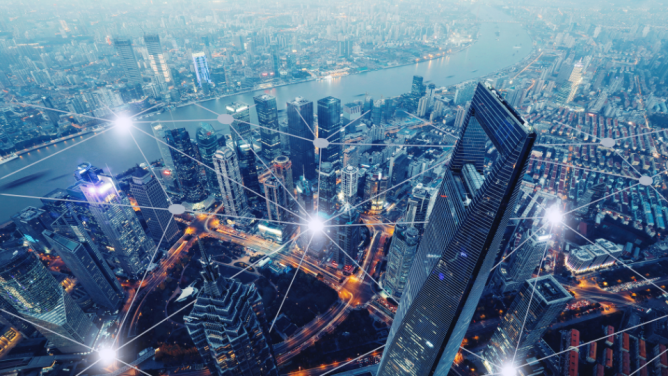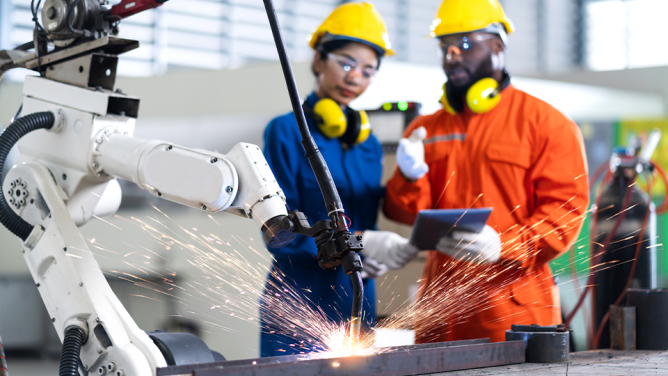The crisis, a treasure trove of opportunities for AI players
First of all, as a fast-growing sector of the digital industries, the AI ecosystem has very quickly turned the crisis into an opportunity space. On the one hand, the sector, accustomed to teleworking, digital tools and iterative project management over short periods of time, was thus able – sometimes from the very first day of confinement – to maintain the pace or pivot on new priorities. On the other hand, AI applications in the fields of healthcare, assistance, logistics and e-work have become very relevant as demand has exploded. AI use cases have been numerous: algorithms for disease or symptom detection, predictions on the spread of epidemics, online assistants dedicated to teleconsultation and diagnosis of Covid. These use cases are based, internationally, on patients’ or hospitals’ health databases, which feed the AI. The latter learns to detect illness from X-rays or to calculate probabilities from a medical file and recorded symptoms. Beyond health, AI has also sometimes been used to optimise supply chains or to analyse the spread of (dis)information on social networks.
But if the field of AI was naturally advantaged to get through this crisis, several limits quickly appeared. First of all, AI algorithms, most of which are based on empirical logic and therefore a database, have technical limitations. For example, a study conducted by Myura Nagendran of Imperial College London highlights that the datasets used do not allow for randomised studies (standard protocol for evaluating the effectiveness of a solution) and confront their results with a very small number of human experts. Secondly, the industrialisation of AI is a market that depends on its fields of application: although it is not yet possible to put a precise figure on it, AI has also suffered from the economic slowdown and the drop in demand and bandwidth from companies on this subject. Finally, the societal and geopolitical impact of AI has been increasingly contested. There are many controversial issues: the Chinese model of society based on control in which AI is a stakeholder, the choice of an American partner to host French health data as part of the development of AI for health, the tracking of the epidemic and its digital counterpart StopCovid are all examples.
This trajectory of AI, presenting benefits as well as criticisms and reinforced by the crisis, refers to a globally positive assessment to which AI has contributed. On the one hand, as AI is a field compatible with online education and teleworking, AI awareness-raising schemes had more impact during the lockdown and many initiatives were developed (such as the Institut Montaigne’s awareness-raising module, Objectif IA). On the other hand, the mobilisation of experts on subjects of crisis management, general interest or solidarity was widely felt and many competitions, “Tech4Good” projects or consortia (such as the AI-Robotics alliance against Covid-19 on a European scale) were created during the containment.
An object of technological war and power
These signals point to a growing appropriation of AI by our societies and increasing attention to its economic, social and environmental impacts. But this agent of societal transformation is also at the heart of the technological war being waged by developed countries. To address this paradox, Pratyusha Kalluri, an AI researcher at Stanford, who denounces both the vagueness of “for good” and the sometimes dangerous game played by the major AI players, proposes a new prism of analysis. Rather than looking at the details of the social or environmental impact or making a moral judgement on a solution, she proposes to study how AI influences the distribution of power between the various stakeholders. This analysis thus encourages us to analyse the impact on competition, but also the relationship between digital tools and human operators, the resources consumed in relation to the gain obtained or governance issues in a global manner.
The impact of AI in question
These issues invite us to consider the different directions that AI may take: will it contribute to the polarisation of the world through powerful tools of competition between digital giants and great powers. Or will it be an instrument of democratisation? To date, AI applications are extending the polarising effects of digital technologies in many industries (e.g. e-commerce where AI is creating a divide between players who have the capacity to integrate it such as Amazon). But many applications are nonetheless democratising their knowledge or services around the world. Examples include AI used in speech recognition or automatic video transcription that make the web more accessible to the elderly or disabled (recent developments, but for example already widely deployed on Google’s video platform, YouTube). In a similar way, the various AI technologies can be tools that unlock, influence or accelerate the development of many transitions (energy, mobility, food…) by deploying more personalised services to end customers through massive data analysis or simulation. The dynamics of AI use and its impact on society should be followed closely because the effects of the choices made by the ecosystem will be imposed on most areas of activity and human societies.


